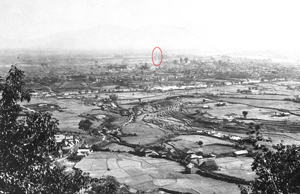
Kathmandu Valley 1883 (J.C. White, 1883)
I – Integrated
E – Earthquake
R – Risk
A – Assessment for the
Himalayan Region
The Himalayan ranges are one of the most seismically active and landslide-prone regions in the world. Given the systemic vulnerability and the low level of preparedness of exposed populations in the high mountains of South Asia, we seek to understand how earthquakes, as natural drivers, affect dynamic and often highly vulnerable livelihoods within the context of rapid population growth and urbanization.
The proposed project integrates the assessment of direct physical damage (i.e., damage to housing stock) and the socio-economic dimensions of specific vulnerability, taking into account dynamic interactions among hazards and development processes such as urbanization and rapid population growth. This integrated approach will focus on the development of a comprehensive assessment methodology for the evaluation of earthquake in the Himalayan region, based on a detailed investigation in one case study area.
The proposed study design allows to move from classical approaches in modeling natural hazards, which have tended to be organized into discipline-based and relatively ‘watertight stovepipes’ of inquiry, into a more systemic and integrative approach accounting for interactions between hazards, engineered systems and society.
An indicator-based vulnerability and resilience index will be developed for Nepal based on detailed case studies using state-of-the-art remote sensing technique, field surveying, multivariate analysis and probabilistic modeling. The results allow for a socio-economic comparison of places and their relative potential for harm or loss. The key findings will result in the development of a framework for integrated earthquake risk assessment.

Kathmandu Valley 2012 (M. Nüsser, 2012)
The competences and expertise of the involved institutions CEDIM and SAI allow to bridge the gap between natural and social sciences in the emerging field of disaster mitigation and risk reduction.
The project is part of the Nature, Society and Technology (NST) Research Bridge.

